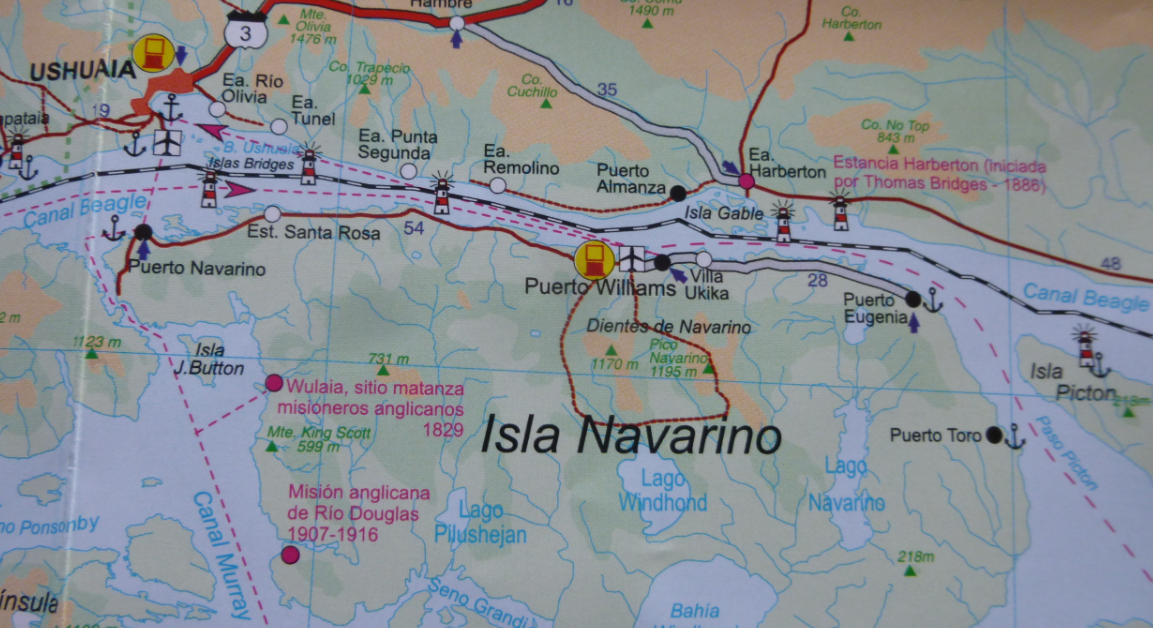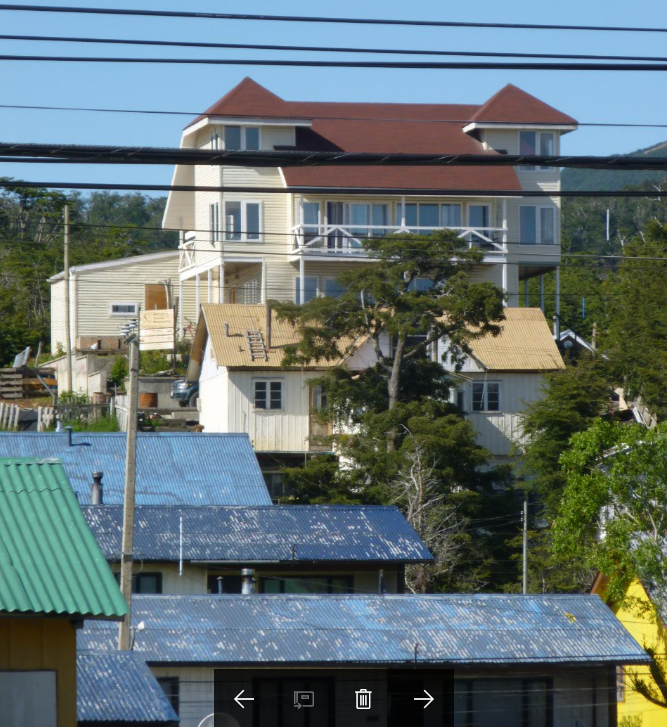Well almost. Thanks to the UK government’s Newton-Picarte science funding and the Economic and Social Research Council’s Impact Acceleration fund I was invited, through Bangor University, to Puerto Williams in the extreme south of Chile. Tierra del Fuego, a place resonant of adventure and of the exotic, is to the north. Few have heard of Isla Navarino one of many islands between Tierra del Fuego and Cape Horn. Puerto Williams is on Isla Navarino close to Ushuaia on the Argentine side of the Beagle Channel, 1500 miles south of Santiago. There is an airport from which there are fly-ins to Antarctica, yachts gather there to prepare to face the challenge of rounding Cape Horn and there is a Chilean naval base.

There are perhaps 5,000 tourists a year who arrive by plane or ferry from Punta Arenas. Puerto Williams is the most southerly village, the closest village to the South Pole. I have been privileged to visit twice to talk with the local mayor, the governor, the naval authorities and the local people about what tourism might mean for them. Development, rapid development, is now imminent.
The Chilean government is keen to see development in the extreme south, they have built a civilian hospital, a court house, new offices for the governor and the municipality and some social housing. They are also funding a research and education centre with a visitor centre on a small hill on the edge of the village. The existing field studies centre dominates the skyline, towering over the village and it was here that I was asked to talk about the likely process of tourism development.


The planned new Cape Horn Centre will be built over the next couple of years and is seen as a major Chilean state investment in the future of this remote region. The Cape Horn Biosphere reserve, to which Puerto Williams will act as a gateway, stretches down south to include Cape Horn and Puerto Williams will quickly grow into a town as it becomes known as the Gateway to Antarctica. Private hotel and lodge development is underway as the entrepreneurs see, and seize, the opportunity. What then of the next ten years?
Access to Puerto Williams is difficult, there is no road access and it is a four hour flight from Punta Arenas currently the main Chilean access to Antarctica for cruising, fly-ins and flyovers. Backpackers, yachters, independent travellers and scientists arrive in Puerto Williams in small numbers by air and by ferry. In the next few years there will be road access from Argentina and from mainland Chile. Local, regional and international tourists will follow, quickly and in large numbers. The Biosphere Reserve has much to offer divers, trekkers, anglers, snorkelers, birdwatchers, yachters and sightseers. The Biosphere Reserve, and the two National Parks which form a part of it, are “paper parks”, unmanaged, unregulated, unprotected. There is both an economic opportunity and a threat.
Without regulation and management in Puerto Williams and in the Biosphere Reserve the impacts of development will be large and overwhelmingly negative. Darwin explored these Chilean islands in the Beagle as he did in Galapagos. Galapagos has many problems, overwhelmed by the impacts of tourism. The building of facilities for tourism and research on the islands resulted in the degradation now widely criticised. Chile has the opportunity to restrict tourism development to the Puerto Williams Gateway and not to sell concessions in the protected area, concessions which will almost certainly result in unsustainable development and degradation. Tourism in the Cape Horn Biosphere Reserve should be boat based and regulated.
Many would argue that Galapagos is not a good model to follow, but at least there was protected area management there from the beginning. The Cape Horn Biosphere reserve is defenceless against the impacts of the cruise boats on their way to Antarctica and the adventure and activity tourism which will develop at Puerto Williams quickly in the next few years – they will exploit the islands and channels of the reserve.
A visiting American research scientist, just back from funded field work in the extreme south of the reserve, lamented the lack of local pride in the islands of the Biosphere Reserve, unable to comprehend the lack of interest in, and feeling for, the reserve amongst local people. For him the islands are an opportunity for research and publication and to further their careers. For the locals of Puerto Williams the islands are a remote foreign land which they have not visited and from which they derive no benefit. Most of the visiting research scientists stay at the Field Centre and do not contribute much to the development of local businesses.
Based from the Field Studies Centre in Puerto Williams, philosophers, artists and some enlightened field scientists have worked for many years to develop the Omora Ethnobotany Park and an Ecotourism with a Hand Lens experience used to introduce local people, school children and tourists to some of the biodiversity of the region. On the southern tip of the Americas, more than 1,000 species of liverworts, moss and lichens can be found.
It is not rocket science to realise that the best chance for Puerto Williams, its residents, and for the Biosphere Reserve, is well managed, carefully regulated, adventure and activity tourism in the protected area provided by businesses staffed by local people who then have a stake in it. It becomes their place and they could use tourism for their sustainable development.
The fundamental question for any place – its people and the natural and cultural heritage to be found there – is whether the place will use tourism for sustainable developed or be used by it. Who exploits the place? Who benefits? If Puerto Williams is to become a destination, and to support a thriving population, intervention is essential. Already local people complain about non-local guides, the helicopter based fly fishing is provided by the upmarket hotel integrated with airline – local businesses barely survive.
Without intervention and management, Puerto Williams and the Biosphere Reserve will be exploited and damaged, the negative impacts far outweighing the positive ones. The threat is of being used by tourism and of the resource of the town and the protected area being exploited unsustainably. The coming of the road is most likely to result in an adventure and activity hub owned and managed by “outsiders” and substantially unregulated. There are only advisory standards for adventure and activity tourism in Chile and no “policing” of the protected area.
The airport runway will be extended, able to take larger jets. It is likely that the trend to more fly-ins to Antarctica will be accelerated with the Puerto Williams airport becoming a transit point. Arriving in larger jets tourists will change plane and fly-in to Antarctica for a selfie with a penguin or to climb, dive, snorkel, trek, ski – for a day trip or a longer stay on one of the scientific bases seeking additional revenue.
It does not have to be like this – tourism is always what we – producers and consumers – make it. The municipality could take a leading role in managing tourism in the gateway of Puerto Williams – it may be possible to adapt the Bonito model, from Brazil, presented at WTM in London in November. There are reports of municipalities in Chile which have taken the power proactively to manage tourism. The Chilean Navy has concerns about safety and marine pollution – they will have to rescue those who venture out with ill-equipped, unregulated providers with little or no experience. The conservationists need to be less concerned about their scientific papers and more concerned about the protection of this beautiful and unique part of the world.
The “End of the Earth” will get a lot closer as access is transformed, management and regulation is essential, now.

The Bonito case study can be accessed here.


